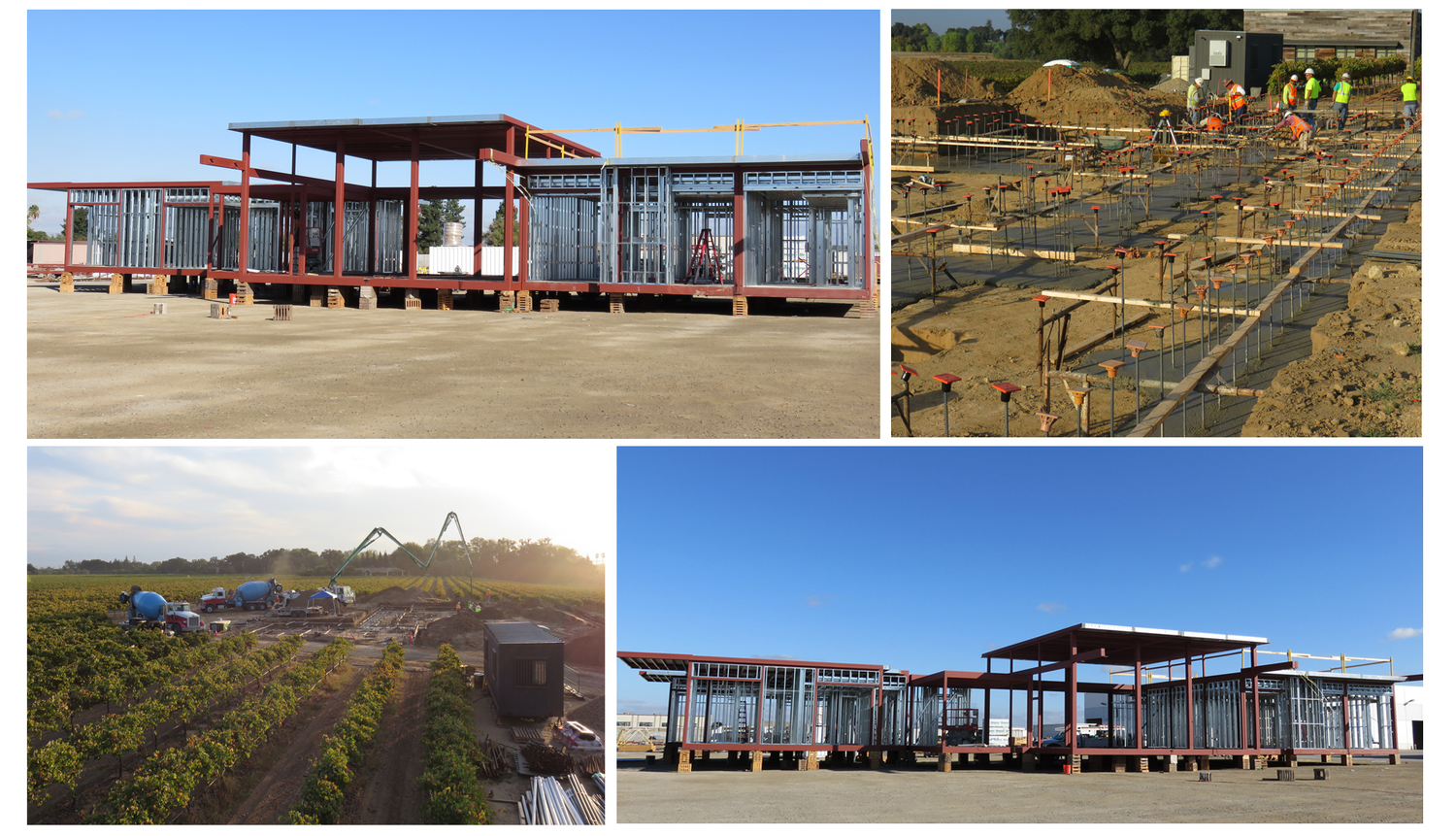
It has been an exciting few weeks for the River Vine Project Team. We finished framing River Vine’s South-East modules at the AMS factory in Manteca, while ramping up site development at the building site. AMS’ innovative parallel process maximizes our scheduling and cost efficiencies, allowing us to finish the first phase of framing in just one month, compared to a minimum of three months using traditional construction methods. Working simultaneously onsite and in the factory, we can deliver a complete custom residence with the same or superior quality materials, systems and features in about half the time of stick-built construction.
River Vine incorporates the same structural system as our Gen7 classrooms. The building’s 5-1/2-inch thick concrete floors are poured at the factory and each module will be craned into place onsite, leaving a 3-foot conditioned crawlspace underneath when the structure is completed. This installation method makes River Vine a permanent prefabricated structure with the same or longer lifespan as a conventional building.
After the final design was approved, the building site was prepped. The soil in Lodi’s Mokelumne Watershed is sandy, so AMS commissioned engineers to prepare a soils report to determine soil characteristics and values. We compared the soil values to the building loads, then computed the appropriate footer size based on weight and soil bearing conditions to ensure that building loads are evenly distributed.
AMS’ skilled site crew excavated River Vine’s house pad and prepped it for rebar forming. The crew dug footing trenches 20 inches deep, then placed vertical and horizontal steel rebar for structural integrity. The final step was pouring the concrete footing, using a 2500 psi compressive concrete mix containing 30% fly ash. Fly ash is an industrial by-product used to supplement Portland cement to slow the setting speed, making it easier to work the concrete and repair surface imperfections to ensure a strong, smooth finish.
After the footing was poured to grade level, the concrete was smoothed, leveled and left to cure. Next, we’ll start prepping for the pouring of the concrete stem walls, which will sit above-grade to join the foundation to River Vine’s vertical walls.
You can find more photos in our River Vine Progress Gallery, as well as more information on our construction process, products and systems throughout the site.



